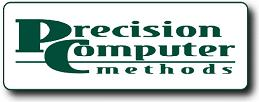Continuing the mantra, "It's all about keywords," once again, the focus for your PPC ad is relevant keywords. You are not limited to how many keywords you can target in your PPC ad campaigns. The keywords you choose will probably be chosen based on their cost. If you can target some 5-cent and 10-cent keywords, you can get more exposure for your budget. In contrast, if you target only high-priced keywords, you will usually be competing against deep-pocket competitors and your exposure will be limited.
By selecting several (10 or more) keywords and targeting ads for those keywords, you give yourself more opportunity to expose your website to a select audience. However, make sure that the keywords are not so obscure that you get too many non-productive click-throughs. It is a delicate balance and will take some testing to know what works and what doesn't. In addition, the broader or more general the keywords are, the more likely that the click-throughs will be non-productive. For example, if you target using the keyword, web design, your competition will be very high. If you use the keyword, web design Reno, you have a much higher chance of getting productive click-throughs. And the price will be lower.
Once you have determined which keywords you want to target, it's time to look at competitor's ads for these keywords. This is easy to do. Simply go to Google (http://adwords.google.com) or Yahoo (http://searchmarketing.yahoo.com) and enter the keyword or keyword phrase into the search block. When the results are displayed, pay attention to the ads that show up on the right-hand side of the page under Sponsored Links. Depending on the keyword, there are probably several pages of ads. Get a feel for the ad content, especially those that appear on the first page and in the top positions. Usually the higher the price an advertiser is willing to pay, the higher the position on the pages under sponsored links.
Remember that these links are hot and when you click on them, it will cost the advertiser the price of the click. Because you are not planning to purchase the advertiser's goods or services, don't click on their ad. Would you want to pay for a competitor's clicks? In fact, if you intentionally click on a competitor's ads with the idea of costing them advertising dollars, both Google and Yahoo would construe it as click fraud. Don't do what you wouldn't want done to you. If you want to go to their website, simply type in their URL to get to their site.
Once you have reviewed your competitors' ads, begin to formulate your ad. We will use Google AdWords for our example. Yahoo Search Marketing is very similar. There are five lines to complete for each ad. Devise your Google ad with the following points in mind:
- Headline: The first line allows a maximum of 25 characters. This line includes your keywords stated in a way that attracts the reader to read further. For example, using words such as free, easy, learn, how to and teach yourself are effective attractors. If your products are not free or you do not have a free offering, you can use attractors like cheap, discount, inexpensive, low cost or limited offer. The first line should be the attention grabber using keywords with attractors.
- Description lines: You have two description lines containing 35 characters each. Again, consider using additional keywords that support your heading or attract the viewer to your website. One of the ways you can attract viewers is to offer something specific. Perhaps it is a free report, a free download, or some other example of what you have to offer in your business or as an authority in the industry. Look back at your competitors' ads and get some ideas on the content for your ad. You don't want to copy their ad, but you may find it useful to borrow from it.
- Display URL: This is the computer URL link that you display to the viewer. If you have a domain name that is easily understood as a name or a phrase, you will want to make it very readable to the viewer. For example, do not use http://www.computergoddess.com/ but rather enter www.ComputerGoddess.com. It will be easier for your viewer to make the connection to your site, and this is a good step toward branding your name.
- Destination URL: This is the URL link that leads to your landing page, where you want the viewer to end up on your website. You may not necessarily want your viewer to land on your home page but rather on a sales page in direct response to your PPC offer.
- Split-testing: In order to find out which ads work well and which don't, create several ads for the same keyword or keyword phrase. Google and Yahoo offer a means of determining the number of click-throughs for each ad. The ads that get the highest click-throughs are the ads you want to keep. The ads with lower click-through rates should be modified or discarded.
Your homework this week is to study PPC ads of your competitors and devise several ads using targeted keywords. It is easy to set up ad campaigns and both Google and Yahoo Search Marketing do a good job of leading you through the process. Set up your ads; determine how much you are willing to spend each day on your ad campaign; and check back frequently to see how well your ad is pulling traffic.
Copyright © 2012 TAO Consultants, Inc. All rights reserved.
Reprinted with permission.
Your homework this week: Using a Google search for your main keywords and look at the ads that come up as a result under sponsored links. The ads coming up using those keywords are going to be your basic model for creating your own ads. Don't copy them directly, but try a couple of variations and split-test the results. Remember, as a courtesy, do NOT click on the ads that come up. If you want to see their website, then type their URL into the address box in your browser.




